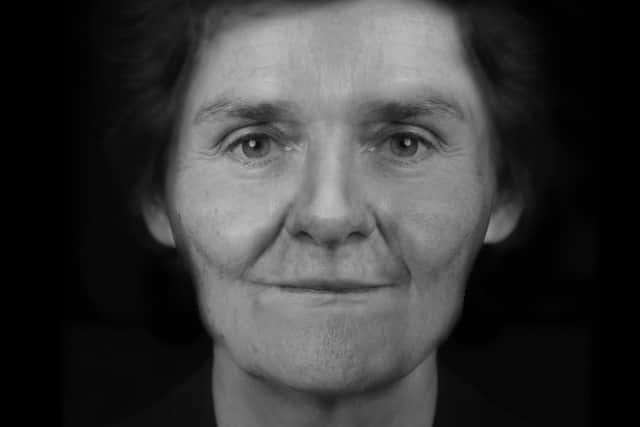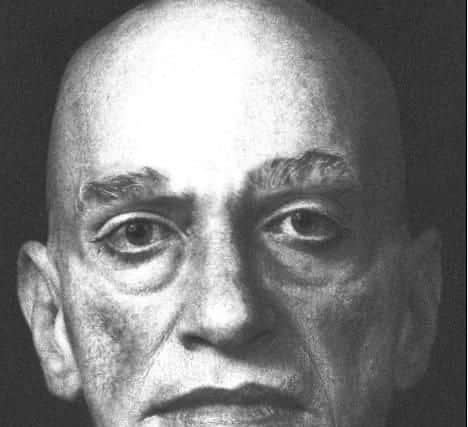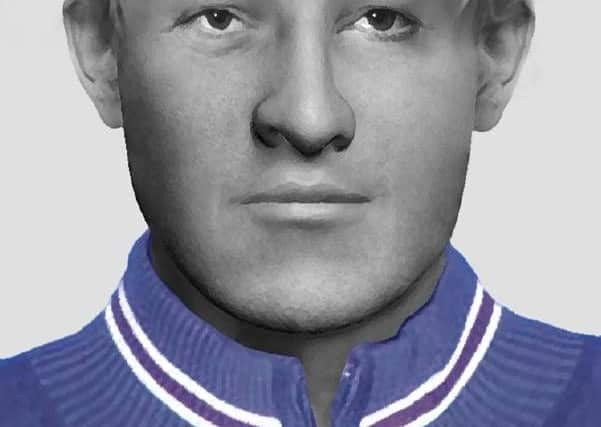The cold case team trying to solve mystery of unidentified remains - including the Port Logan woman
This article contains affiliate links. We may earn a small commission on items purchased through this article, but that does not affect our editorial judgement.
and live on Freeview channel 276
From the clothes a person wore to scrutinising words in a newspaper - these are the vital clues which could hold the key to solving the puzzle of who an unidentified body is.
Currently there are more than 1,000 unidentified remains cases on the UK National Crime Agency’s Missing Person’s Database, with ongoing investigations to try and establish who they are.
Advertisement
Hide AdAdvertisement
Hide AdAmong those who are casting their eyes over such cases is the newly formed cold case unit at Glasgow Caledonian University.
What is the Cold Case Unit and what do they do?


The unit was formed last year and is made up of criminology students co-directed by Dr Maureen Taylor and Professor Lesley McMillan.
The team, which works on a pro bono basis, of 11 students review and investigate cases putting the theory that they have been taught in class into practice.
Advertisement
Hide AdAdvertisement
Hide AdGCU was the first university in Scotland to develop a cold case unit, in partnership with Locate International. Dr Taylor said the students were recruited through a rigorous process.
Speaking about the work they do, she said: “We work together to review and investigate cold cases, involving missing persons and unidentified bodies.”
At the moment the team has seven cases of unidentified remains which have been found mostly in Scotland, although they have two English cases which have a possible Scottish connection.
Dr Taylor added: “We have established a good relationship with the Police Scotland National Missing Person’s Unit.”
Advertisement
Hide AdAdvertisement
Hide AdTheir work has led them to seek out experts in various fields including forensic anthropology, forensic oceanography, genealogy, health and social history.
What is Locate International?
A community interest company, it brings together former detectives, other experts and the public to review unsolved missing and unidentified remains cases.
It has also developed a programme which sees it working with universities to help progress historical cases.
The talent development programme sees students take on real-life cases alongside specialists.
Advertisement
Hide AdAdvertisement
Hide AdCo-founder of Locate International, Dave Grimstead, said: “We act as a support for police and families.
“A lot of it is time, as you can imagine where cases remain unsolved for a long time, we are able to bring together former detectives with student teams and look at all sorts of opportunities to review the cases, whether that is specialist intelligence research or just purely reviewing the case and trying to find new ways forward.”
How do the students carry out their work?
Among the cases the unit at GCU has looked at is that of a woman whose body was found on 22 November, 2006. She was found on the beach at Port Logan and was believed to have been in the water for up to six months.


The team’s work led to a fresh appeal with a new facial reconstruction being sought and it was produced by the Face Lab at Liverpool’s John Moores University
Advertisement
Hide AdAdvertisement
Hide AdSpeaking on how they go about looking at a case, Dr Taylor said: “At the start of a case, students gather all the information they can find using open sources, to identify what is currently known, to identify gaps in information or discrepancies and develop potential lines of enquiry.
“They are then tasked with actions to undertake and report back to the group. Alongside helping to move cases forward, it’s a fantastic learning experience for students who may become investigators of the future. They learn and develop research and investigative skills and have demonstrated tenacity, determination and critical thinking skills. We have been impressed with their initiative and novel ideas.”
Dr Taylor said they draw on expertise from people within Locate International and outwards for each case. Often as the cases are very different they can end up doing a range of inquiries.
Professor McMillan added: “What we are doing is bringing an additional resource, a different set of eyes taking a fresh look at a case. We have time and capacity to look in-depth and explore all sorts of possibilities.
Advertisement
Hide AdAdvertisement
Hide Ad“Some of these may be rabbit holes that may or may not lead somewhere, but they are all worth exploring to see if we can find something that helps identify someone.
“We may find the piece of the jigsaw that leads to the case being solved, but even if we don’t we hope we’ll add other pieces to the jigsaw so perhaps in the future when some other information or intelligence comes in to Police Scotland, it may make more sense in relation to the pieces we’ve already added.
“For many of our cases we are going back in time trying to understand how someone ended up there and what clues there are about who they might be. There is often research on areas of social life and history that has included transport and travel, health conditions, music bands and people’s personal belongings like newspapers and swiss army knives. We explore all these avenues to try to find information that may help us establish who they may be.”
What work did the students do on the Port Logan case?
Information available about the Port Logan Woman indicated that she was aged between 30 and 50, was of thin build and between 4ft 11in and 5ft 4in tall.
Advertisement
Hide AdAdvertisement
Hide AdShe was wearing size 10 black Bay Trading trousers, a white BHS size 34c bra and tan-coloured tights.
Dr Taylor said “Students reviewed the information available about Port Logan Woman and developed a number of lines of enquiry around her clothing and where she was found. They considered how she could have ended up on the beach and where she could have gone in the water.
“For example, had she been swimming and drowned, had she gone overboard from a boat, had she walked or jumped into the sea or inland in a river? Was this an accident or suicide? The team identified a number of hypotheses.
“They also consulted with specialists in local drift trajectories and cross matched databases of missing people from the UK and abroad. Our intention was to develop a new media appeal for information but with a more targeted focus, so the team curated a list of possible places where the woman may have been or stayed, either as a resident or visitor.
Advertisement
Hide AdAdvertisement
Hide Ad“The area is a popular place for visitors, but we also considered further afield given where she may have entered the water. A key part of this appeal was to consider a new facial reconstruction using the advances in technology available. We consulted with a specialist at Liverpool John Moore’s FaceLab and a new image was produced.”
What are some of the other cases they have worked on?
The team’s cases span from bodies found in 1972 to 2011 from the case of a man, called Balmore man, who was found on 16 October, 2011, just outside Glasgow in a wooded area.
The team is also looking at cases in the far north of Scotland, Edinburgh and Dumfries and Galloway.


The English cases are from Northumbria and Derbyshire.
Prof McMillan said: “The cases are all very different. A number are apparent suicides while others it is not clear how the person lost their life.
Advertisement
Hide AdAdvertisement
Hide Ad“Our cases range from 1972 onwards and some of these cases pre-date forensic techniques such as DNA. For some cases we don’t have a picture of the deceased or pictures of the deceased. Some of the cases have very limited information to work with but we explore every opportunity to try to identify people.”


Sometimes their research can take an interesting turn, for example that of a man found in Burnside Plantation in Dumfriesshire on 20 December 2010. His estimated date of death was 13 November that year - but one puzzling item was found close by, a copy of an Italian newspaper from four months prior to his death.
Dr Taylor says they have spent time trying to find out if it holds any clues to his identity.
She said: “Our students were able to locate and access a hard copy of the newspaper at the British Library and using volunteers at Locate, were able to translate it to English to see if it holds any indication as to who the man is, why he was found in the location or why he may have taken his own life.”
Advertisement
Hide AdAdvertisement
Hide AdProfessor McMillan added: “Why would someone who died in the forest in Dumfries and Galloway have a copy of an Italian newspaper from four months ago? Was it because it meant something to him, did he keep it for practical purposes, because he going to wrap something in it, or maybe it was never his in the first place. These are the sorts of things we have to investigate and try to make sense of.”
A message from the editor:
Thank you for reading. NationalWorld is a new national news brand, produced by a team of journalists, editors, video producers and designers who live and work across the UK. Find out more about who’s who in the team, and our editorial values. We want to start a community among our readers, so please follow us on Facebook, Twitter and Instagram, and keep the conversation going. You can also sign up to our email newsletters and get a curated selection of our best reads to your inbox every day.
Comment Guidelines
National World encourages reader discussion on our stories. User feedback, insights and back-and-forth exchanges add a rich layer of context to reporting. Please review our Community Guidelines before commenting.
